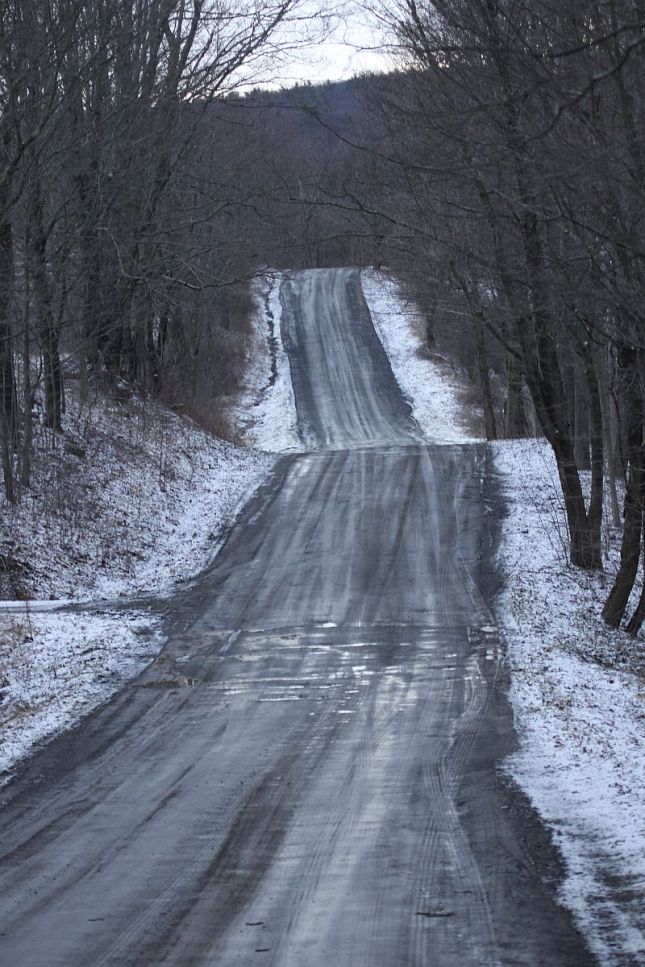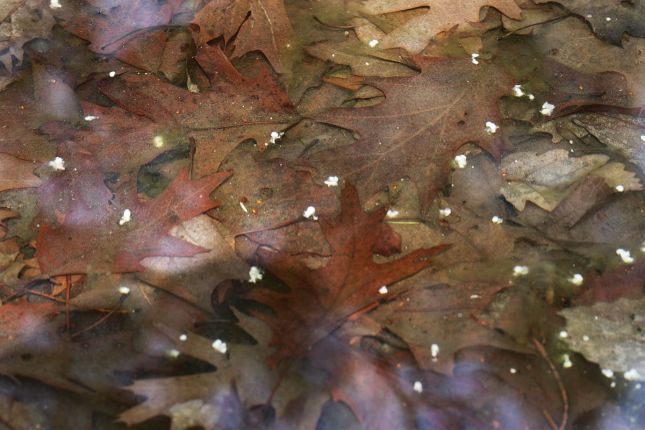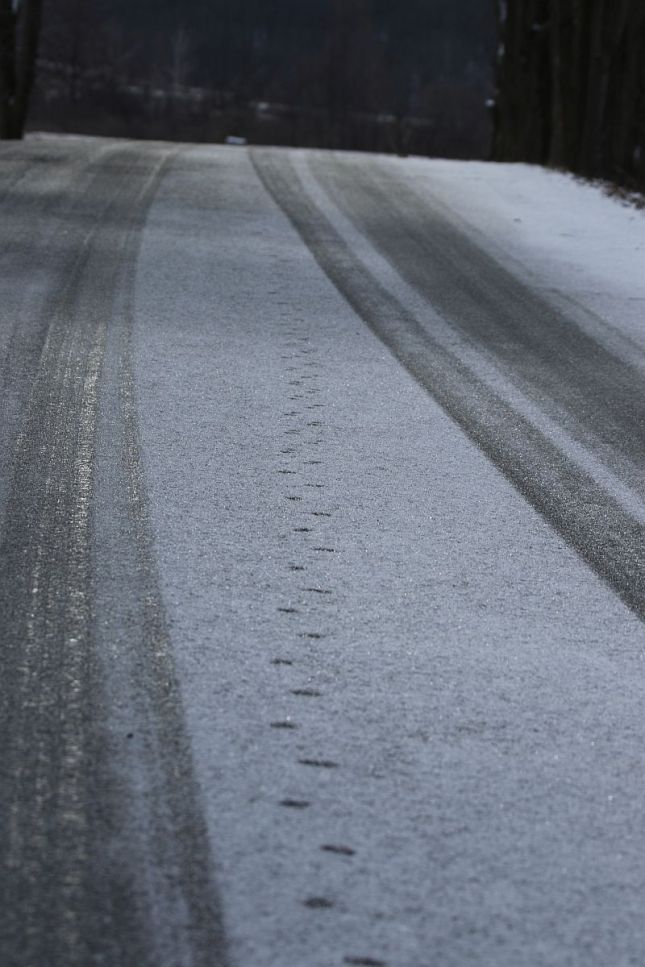[The content of this blog is almost identical to a posting on the Farmscape Ecology Program Facebook page by Conrad earlier today, which we hereby make available to readers who don’t use Facebook].
We are on the tail of Winter or the cusp of Spring. The time of year for ice and mud, snow and rain. It is the season when the Woodcocks peet bravely on a rimey mornings and evenings, when male Red-winged Blackbirds look cold and lonely around frosty ponds, and when… the salamanders and frogs move across wet roads.
To understand why creatures like Spotted Salamanders try to cross roads, one has to understand that they have their own routes to follow – the paths that lead them from the upland forest where they spent most of the year to the vernal pool or other wetland where they will mate. These are paths they may have followed year after year (Spotted Salamanders can live a couple of decades), generation after generation; and yet, more and more, they are intersecting with our own asphalt causeways.
During the first wet and warmer nights of Spring, these creatures undertake their migrations. They appear as if by some mysterious flowering from the earth for one rarely sees them at other times of year. The salamanders are slow and determined and we are fast and determined – many die beneath our car tires. Frogs are quicker but more erratic, they too are often hit. This photo collection profiles some of what we have seen so far this year.
The DEC’s Hudson River Estuary Program has a valuable project to identify road crossings and encourage volunteers to help guide salamanders and frogs safely across the road, please check out their web site: http://www.dec.ny.gov/lands/51925.html for tips and information on this citizen science network.
This year, the majority of crossings to breeding ponds has probably already happened in many areas, but the next warm, rainy evening may bring further movement, including some breeders returning to the woods. It’s not too late to take a flashlight, a reflective vest and, while mindful of your own safety, walk to a nearby stretch of wetland-bordered road and see who you can help across.
At the least, please think twice before driving out on such warm, wet evenings.

No images of dark, wet roads at night, but this is a road on the morning after. This has been an ‘on again – off again’ Spring and, as happened on this date, a rainy evening eventually changed to a snowy night.

By the time morning comes, there are usually no live amphibians left on the road, especially if the night got cold. But evidence of what has happened remains.

In our area, Spotted Salamanders are usually the most common road-crossing salamanders, and we saw more than 30 last week, about half of whom were alive. These are long (up to more than 6”), lumbering creatures with bright yellow dots on a black (or, as early biologists, put it “subviolet”) background.

They seem to look better on leaves than asphalt. There was also one greyish Jefferson or Blue-spotted Salamander amongst those attempting to cross.

We also came across several of these last week, this is a Four-toed Salamander.

Four-toeds are rarer or, at least, less conspicuous. They tend to be associated with Sphagnum and their ways seem more mysterious. Look for relatively small, slim salamanders, 2-3” long with a squared snout and an orange, herringboned back. The belly is a characteristic bright white with black dots.

Frogs were also moving. We saw five or so dead Wood Frogs, but innumerable (50-100?) of these tiny Spring Peepers, perhaps a quarter to a half of whom were alive.

Many of these creatures want to get to places like this – a woodland pool. Such pools tend to dry out in late summer, meaning that many predators, like fish and Bullfrogs, are absent. If they develop fast enough, the eggs of the road-crossers, laid during the early Spring orgies, will hatch into larvae that will grow into terrestrial juveniles who leave the pond before it dries.

While I saw no eggs or adults in this pond over the weekend, these tell-tale, bread-crumb like spermatophores indicated that at least one ardent male salamander had arrived, perhaps several.

Although our roads have surely upped the toll, Spring breeding has probably always been a dangerous time for these animals. One occasionally finds dismembered salamanders or frogs around Spring pools, perhaps indication that a passing predator, such as a Raccoon or Opossum, had a meal. Spotted Salamander do release a sticky white ooze that is said to be mildly toxic and might provide some protection.
These trotting fox tracks were going up a road where several salamanders had been run over, I don’t know whether that was coincidence or scavenging.

Amphibians aren’t the only animals one is apt to see on wet roads, earthworms also come out in abundance.

And the avian ‘road crew’ seems take advantage of this.

